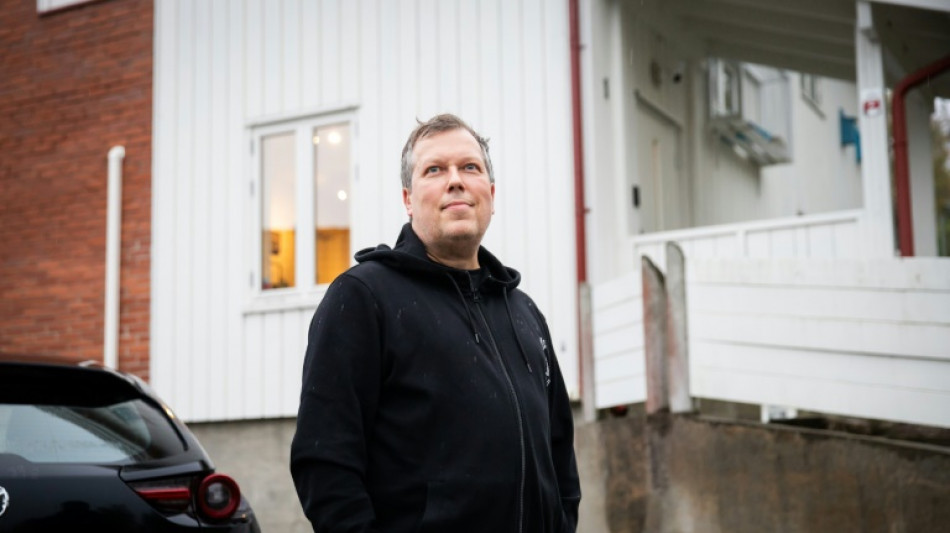
SCS
0.2300


By installing a heat pump in his house in the hills of Oslo, Oyvind Solstad killed three birds with one stone, improving his comfort, finances and climate footprint.
"When I researched this, I read that a heat pump can generate the heat equivalent of three to four times the amount of electricity you put into it," said the 56-year-old communications adviser for a railway company.
"So just that fact made a light bulb go off above my head, thinking 'This has to be clever'."
Hundreds of thousands of Norwegians have had the same bright idea, including Crown Prince Haakon who has had heat pumps installed at his official residence.
Norway is among the countries with the most heat pumps per capita, along with neighbouring Finland and Sweden.
The International Energy Agency (IEA) considers the technology as instrumental in combatting climate change as electric vehicles, since heating solutions generate some four billion tonnes of carbon dioxide per year, representing eight percent of global emissions.
The fact that Nordic countries, known for their harsh winters, are among the biggest users disproves the often-held assumption that the technology does not work when the temperature plummets.
The myth has fuelled resistance across continental Europe.
"There are a lot of false myths out there about heat pumps. Some oil and gas producing countries such as Russia, some people, some sectors, some businesses don't want to see this transition," explained Caroline Haglund Stignor, a researcher at RISE Research Institutes of Sweden.
"Yes, heat pumps work in cold climates. Yes, heat pumps work in old buildings."
To heat a home, heat pumps extract outdoor heat -- which exists even in cold weather -- and inject it indoors.
Early models did not include defrosting systems or variable speed compressors, which nowadays enable them to run more efficiently in a wider range of temperatures.
While their efficiency declines somewhat in cold weather, they are still more efficient and greener than other options, experts say.
"This is a mature technology that works, proven to keep millions of homes warm every winter. But it's a continuous development to make it even better," Stignor said.
According to a study by the independent group Regulatory Assistance Project (RAP), air source cold-climate heat pumps can be up to twice as efficient as electric heating when outdoor temperatures fall to -30 Celsius (-22 Fahrenheit).
In France, heat pump detractors also argue they lead to higher electricity consumption, don't work well in all conditions, such as poorly insulated homes, and require costly installation.
Oil and gas furnaces remain popular in many countries.
In Germany, coalition partners this year finally reached an agreement to ban fossil-based heating as of 2045.
The state now subsidises heat pumps, which in 2022 were used in just three percent of homes, and sales are beginning to take off.
- Savings -
Contrary to many European countries, Norway has almost no district heating, and banned oil furnaces in January 2020.
To keep warm during its cold winters, the country relies primarily on its abundant and clean electricity, thanks to its vast hydropower resources.
By producing about three to five kWh of thermal energy for every kWh of electricity consumed, heat pumps are instruments for energy efficiency -- a key aspect of the fight against climate change -- and also allow consumers to make major savings.
After replacing his electric radiator with an air-to-air heat pump two years ago, Solstad saw his electricity bills shrink.
"In the first four months, our consumption decreased by 20 percent compared to the previous year even though we bought an electric car in the meantime," he said.
While his initial investment may seem costly, at around 2,500 euros ($2,630) including installation, he thinks it will pay for itself "in just a few years".
As an added bonus, his heat pump works as an air conditioner in summer.
When electricity prices went through the roof last year during the energy crisis brought on by the war in Ukraine, sales of heat pumps hit a record high in Norway, jumping by 25 percent.
The trend continued in the first half of this year.
"Norwegians have understood that they can expect higher electricity prices in the coming years compared to the past," explained Rolf Iver Mytting Hagemoen, head of the Norwegian Heat Pump Association (NOVAP).
"And energy efficiency is an increasingly hot issue," he said.
M.T.Smith--TFWP